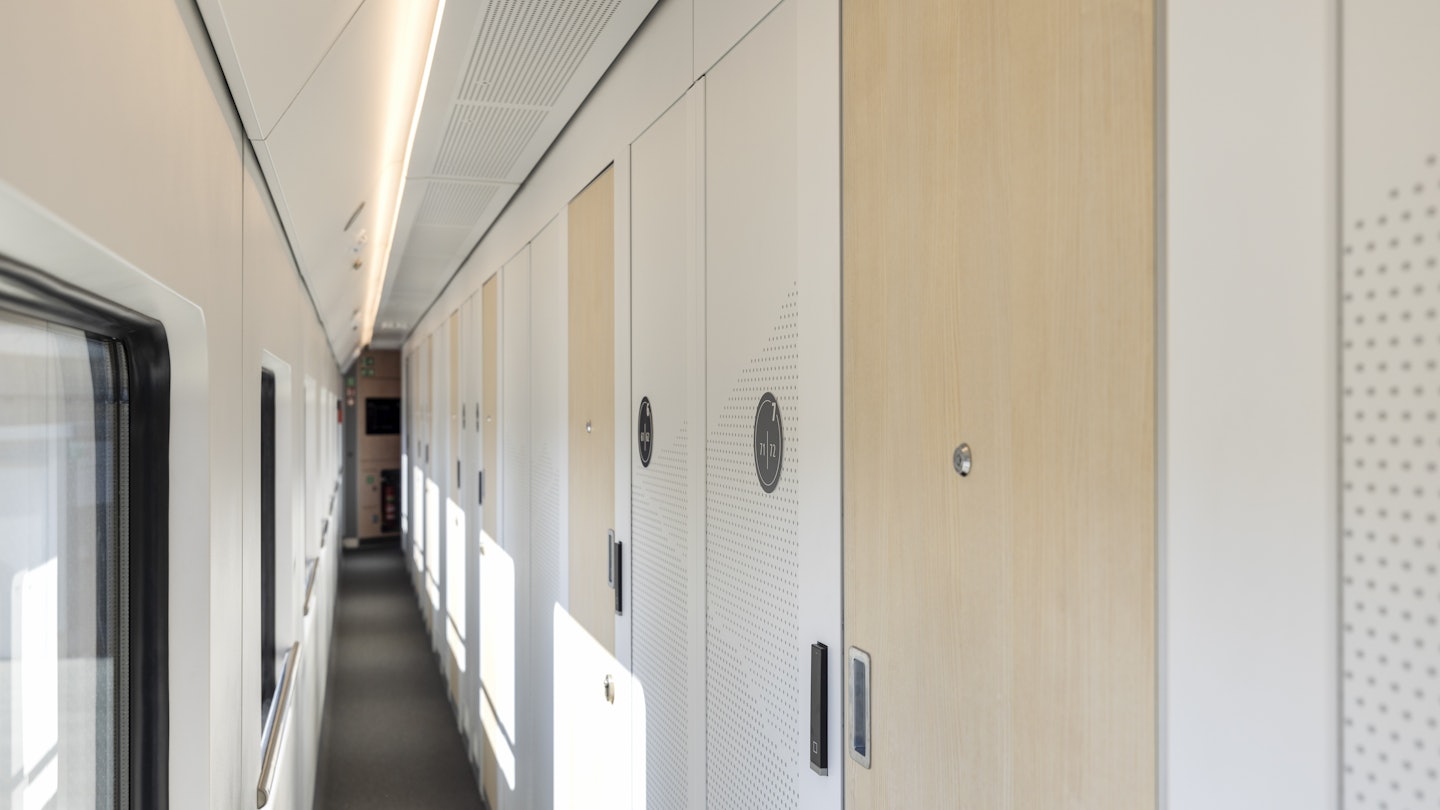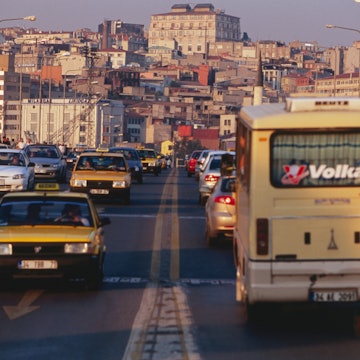
Inside the new 'privacy pod' cabins on Europe's sleeper trains

Mar 22, 2024 • 4 min read

The new Nightjet sleeper train fleet has individual compartments called mini cabins © ÖBB_Harald Eisenberger
Nightjet sleeper trains have a new mini cabin, perfect for solo travelers or those wanting privacy.
Over the last two years I’ve rejoiced in the resurgence of sleeper trains around Europe, traveling everywhere from Norway, Sweden and Finland to Romania, Bulgaria and Turkey.
In the East, privacy is not a problem: most passengers are happy to share couchette compartments, sleeping above or below whoever shows up, sharing food and chatting until the lights go off. But in Western Europe there’s a profound difference, with passengers reluctant to sleep next to strangers. Many buy out the whole compartment, while others use Facebook groups to match up with travelers willing to share. So I was intrigued by the mini cabins recently introduced on Nightjet’s newest fleet – a welcome addition for solo passengers wanting to travel in peace.

All aboard the upgraded trains
Austria’s state operator, ÖBB, has been leading the way with its Nightjet services that currently operate on 20 routes across Europe. Towards the end of last year it launched a new fleet of upgraded trains to enhance the experience for regular riders and to encourage potential customers put off by the old rolling stock. With just seven carriages, the trains contain regular couchettes, comfort-plus compartments with pre-made beds and en suite facilities, and the mini cabins, which have proven a popular option.

The first route to get the new service was between Vienna and Hamburg, and I boarded just before 8pm, wheeling my bag into what looked like a very long locker room – or a morgue, depending on your mood. As the train thumped out of the capital, the attendant handed over a magnetic key card that unlocked my cabin door. She demonstrated that tapping the same pad again would open two lockers, a small one for my shoes and a large one for my suitcase, which fitted easily inside.
Brightly lit with a soft grey palette and red blankets, the carriage is not designed for sitting around and socializing. There are single pull-down seats in the corridor for that, but the majority of passengers board, slot away bags and shoes, then disappear until morning. I was traveling with a friend, who at 177cm (5ft 10in) tall, was skeptical about sleeping in what looked like a large bread bin, but was soon pleased to find plenty of room to set up her laptop, crack open a bottle of cider and turn the space into a small student flat. A hatch by our heads meant that we could chat until sleeping, while those traveling solo would leave it locked into place.

Inside the mini cabin: facilities, comfort and food
As I drew the door shut to change into my pyjamas, I felt excited by the ride. Looking around I discovered free wi-fi, a charging pad by the hatch, a separate socket and a USB port along with a digital panel to adjust colored lighting and call the attendant for drinks and snacks. Owing to departure times, there is no dining car on board but there are wraps and sandwiches available along with microwaved food including Bolognese and vegetarian chilli “sin” carne. I ordered a hot dog with mustard which turned out to be two boiled frankfurters with slices of brown bread. My advice? Eat heartily before boarding.

After 9pm passengers are expected to observe silence and so I read a little, wishing that the small square pillow had a bit more life in it, before folding my coat up and shoving it under my head. Through no fault of the train I slept on and off, waking at 7am and raising the blind to find the train passing through the German town of Langenhagen, lakes and fields flitting by. With little view from my porthole window, I hopped down and sat on a seat in the corridor, watching the sunrise over coffee and a couple of bread rolls and jam – included with the ticket. By 8:40am, the cabins were all open, the carriage filled with stretching bodies as we drew into our destination. Alert, refreshed and ready to go, passengers filed out and in 10 minutes a taxi had taken us into the heart of the city.

The cost of the sleeper train ticket
The journey from Vienna to Hamburg takes 13 hours and cost €140 – booked two weeks in advance. If you book your ticket three months in advance, you could expect to pay from €101. By comparison a flight takes 90 minutes and costs around €100, but that doesn’t include the €40 taxi ride to Vienna airport, the €30 ride from Hamburg airport into the city, or the price of a hotel which I’d saved by traveling overnight. Nightjet’s own website is perfectly navigable, but for longer journeys including multiple trains and flights Omio works a treat.













